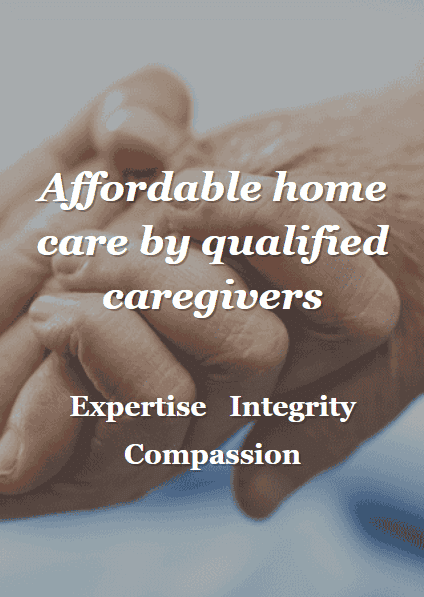Effective communication is the cornerstone of successful caregiving. At ComforHome, we understand that clear and efficient communication between caregivers and clients is vital to providing top-notch care. In this guide, we’ll delve into the essential aspects of caregiver-client communication, offering detailed instructions on how caregivers can understand client needs, respond promptly, manage service schedules, and provide accurate quotes. Effective communication enables caregivers to establish better care plans, leading to clearer and higher quality services.
1. Understanding Client Service Requirements
The first step in effective communication is understanding the client’s specific service requirements. Caregivers should:
- Gather Detailed Information: Obtain a comprehensive understanding of the client’s service needs, including their address and contact information. This ensures caregivers know exactly where and when services are needed.
- Assess Physical and Mental Health: Understand the client’s physical condition, mobility, and mental state. This information helps determine if additional services, such as mobility assistance or mental health support, are necessary.
- Clarify Service Content: Based on the client’s health and needs, caregivers can help clarify the scope of services provided. This includes discussing potential additional services that may benefit the client.
For instance, if a client requires assistance with daily activities but also has limited mobility, the caregiver might suggest including transportation services for medical appointments or social outings. This proactive approach not only meets the client’s needs but also ensures their safety and well-being.
Detailed Steps for Understanding Client Needs
- Initial Assessment: When first contacting a client, ask open-ended questions about their daily routine and specific challenges. Questions such as, “Can you walk me through a typical day for you?” can provide insight into the client’s needs.
- Health History: Gather information about the client’s health history, including any chronic conditions, recent hospitalizations, and medication schedules. This will help tailor the care plan to their specific health requirements.
- Environmental Factors: Learn about the client’s home environment, including the layout, accessibility features, and any potential hazards. This information is crucial for planning safe and effective care.
2. Responding Promptly to Client Inquiries
Timely responses are crucial in establishing trust and maintaining open communication with clients. Caregivers should:
- Prompt Replies: Aim to respond to client messages as soon as possible. Quick responses show clients that their needs are a priority.
- Follow-Up Questions: Use follow-up questions to gain a deeper understanding of the client’s requirements. For example, ask about specific preferences or any additional support they might need.
- Availability Confirmation: Confirm your availability to provide the requested services, ensuring there are no scheduling conflicts.
Consider a scenario where a client reaches out late in the evening with an urgent request for assistance the next morning. By responding promptly and confirming availability, the caregiver can alleviate the client’s stress and demonstrate reliability.
Tips for Timely Communication
- Set Communication Guidelines: Establish clear communication guidelines with clients, including preferred methods of contact (phone, email, text) and expected response times.
- Automated Responses: Use automated responses to acknowledge receipt of messages if you are unable to reply immediately. This reassures clients that their request is being handled.
- Follow-Up Reminders: Schedule reminders to follow up on client inquiries that require further information or action. This ensures no request is overlooked.
3. Managing Service Schedules
Clear communication about service schedules is essential to avoid misunderstandings and ensure smooth service delivery. Caregivers should:
- Detail Service Times: Confirm whether services are needed in the morning, evening, weekdays, or weekends. Understanding the client’s schedule helps in planning and providing consistent care.
- Duration of Service: Clarify the duration of each service session. Determine if services are required once or multiple times a day, and for how long each session should last.
- Regular Updates: Provide regular updates to the client about any changes in the schedule. This includes notifying them of potential delays or rescheduling needs.
For example, if a client needs morning assistance with bathing and dressing, followed by evening medication reminders, the caregiver should confirm these times and ensure they align with the client’s daily routine. This level of detail helps in creating a predictable and comforting environment for the client.
Practical Steps for Schedule Management
- Create a Care Calendar: Use a care calendar to outline daily, weekly, and monthly schedules. Share this calendar with the client and their family to keep everyone informed.
- Confirm Appointments: Regularly confirm scheduled appointments with clients, particularly for recurring services. This prevents any miscommunication about service times.
- Adjustments and Flexibility: Be flexible and open to adjusting the schedule as needed. Life events and emergencies can necessitate changes, and being accommodating strengthens the caregiver-client relationship.
4. Providing Accurate and Reasonable Quotes
Transparent pricing is crucial for building trust and ensuring client satisfaction. Caregivers should:
- Initial Quote Range: Offer an initial price range during the first interaction with the client. This range should be reasonable and reflect the scope of services discussed.
- Transparent Pricing: Explain that ComforHome has eliminated intermediary fees, allowing caregivers and clients to benefit from direct negotiations. This transparency encourages fair pricing and mutual agreement.
- Reasonable Quotations: Ensure that the quotes provided are fair and competitive. Overpricing can deter clients, while underpricing may not reflect the quality of service provided.
For instance, if a caregiver is providing extensive care, including meal preparation, medication management, and companionship, the initial quote should reflect the comprehensive nature of the services. Clear communication about pricing helps avoid misunderstandings and sets the foundation for a positive caregiver-client relationship.
Steps for Accurate Quoting
- Detailed Service List: Provide a detailed list of services included in the quote. This transparency helps clients understand what they are paying for.
- Breakdown of Costs: Offer a breakdown of costs, including hourly rates and any additional charges for special services or extended hours.
- Regular Reviews: Regularly review and adjust quotes as necessary to reflect changes in service requirements or market rates. Keep clients informed of any adjustments.
Effective Communication in Action
Imagine Sarah, a ComforHome caregiver, receives a message from a potential client, Mr. Johnson, who requires assistance for his elderly mother. Sarah promptly responds to the inquiry, gathering detailed information about Mrs. Johnson’s health, mobility, and daily needs. She learns that Mrs. Johnson has dementia and requires help with personal care and medication management.
Sarah clarifies the services needed, suggesting additional support such as cognitive stimulation activities to enhance Mrs. Johnson’s quality of life. She confirms her availability, aligning her schedule with the family’s preference for morning and evening visits.
In her initial response, Sarah provides a reasonable quote range, explaining the direct negotiation benefits of the ComforHome platform. She emphasizes the elimination of intermediary fees, ensuring Mr. Johnson understands the cost-effectiveness of the arrangement.
By following up with detailed questions and maintaining transparent communication, Sarah builds trust with Mr. Johnson. She schedules an in-person meeting to finalize the care plan, ensuring all details are clearly understood and agreed upon.
Conclusion
Effective communication between caregivers and clients at ComforHome is vital for delivering exceptional care. By understanding client needs, responding promptly, managing service schedules, and providing accurate quotes, caregivers can establish trust and ensure client satisfaction. This comprehensive approach not only meets the immediate needs of clients but also fosters long-term, positive relationships that enhance the overall caregiving experience. Through clear and compassionate communication, caregivers can truly master the art of providing exceptional care, transforming lives one interaction at a time.








